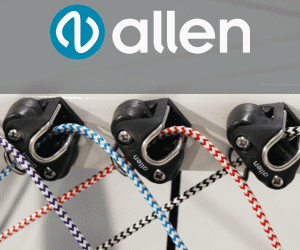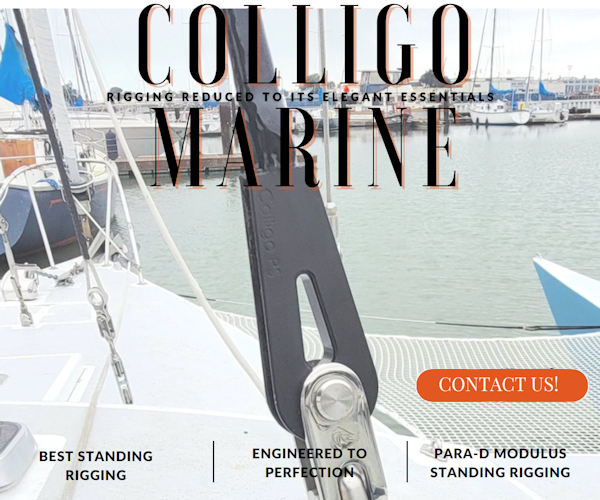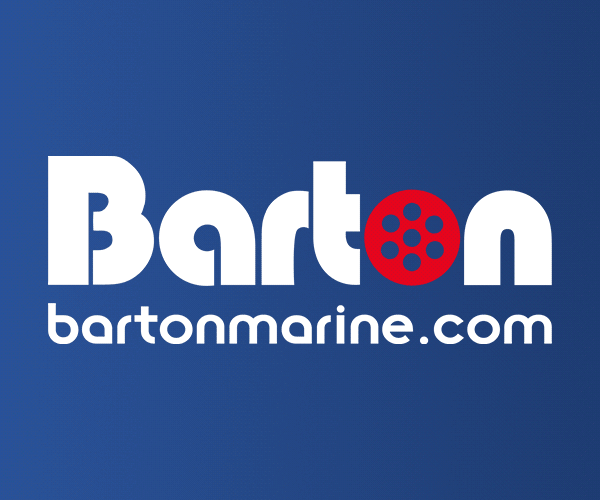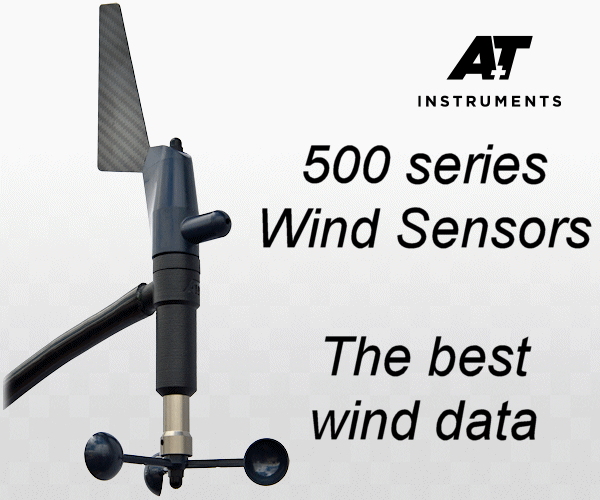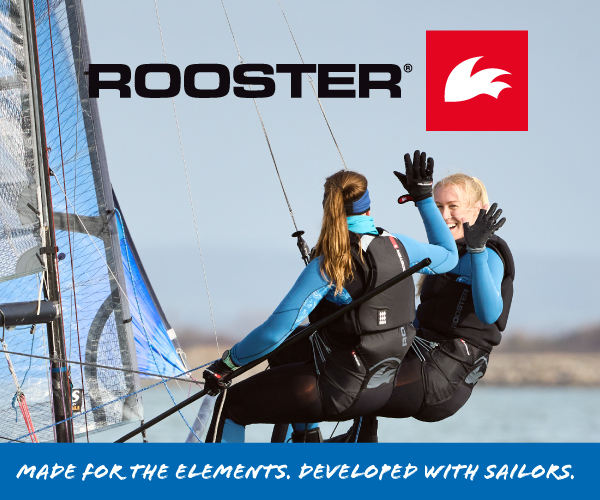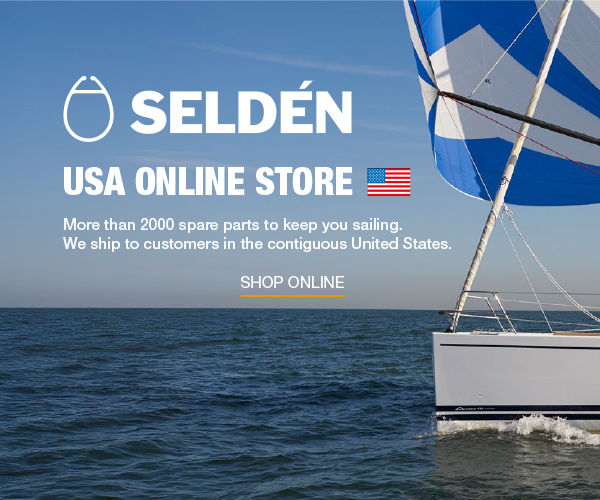
America's Cup: Dan Bernasconi - "We just want to be fast."
by Richard Gladwell Sail-World NZ 1 Jul 2024 01:45 PDT
1 July 2024
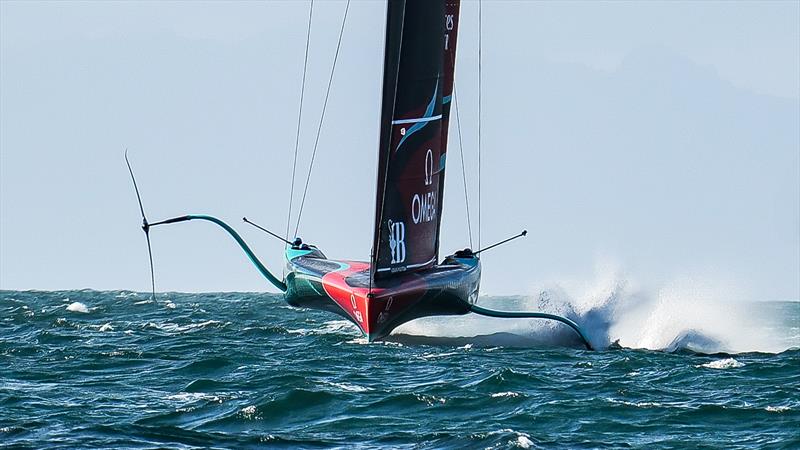
The AC75 hull and skeg work together to make airflows think they are sealed to the water - with no underhull crossflow © Sam Thom / America's Cup
Emirates Team New Zealand have just started training off Barcelona, with less than 60 days left until the start of the 2024 Louis Vuitton America's Cup.
The Defending champions, looking for a three-peat, were the first to launch and sail one of the new-generation AC75s.
Before they left New Zealand, the Kiwis had sailed for 14 days out of the 18 available. However, the Kiwis have been overtaken by three teams with 30-34 days each sailing on the Mediterranean, and the fourth (American Magic) has 25 days in its logbook.
Before they left Auckland, Sail-World caught up with ETNZ design chief Dan Bernasconi.
The Brit, formerly with McLaren Racing, holds a PhD in Mathematical Modeling and Aerodynamics. Bernasconi has been involved in the design development at ETNZ since leaving the Alinghi America's Cup team in 2010 following their unsuccessful defence of the Deed of Gift Match.
He developed Gomboc, a proprietary software program that has become Emirates Team New Zealand's velocity prediction and simulation tool for America's Cup design development since the 2010 Cup.
That 14-year era includes two Cup cycles of foiling wingsailed catamarans followed by the development of the AC75 class rule in 2019 and the design of three of the 69-foot foiling monohulls and the 40-foot AC40, one design used by all Cup teams.
"Each of our yachts is a step on from the one before, and with each we're trying to achieve the same thing" Bernasconi reflects. "We just want to be fast."
"We haven't made many philosophical changes to the design direction - we're trying to make every boat better than the last. However, the conditions in Barcelona are quite different to Auckland, so this time we're designing for waves and the lighter wind. That goes into every aspect of the AC75 - the hull shape, foils, sails and control systems.
"We are optimising every part - taking a fresh look - and in some cases looking at what the other guys did last time and trying to turn it all into a good package."
From a bustle to a skeg
One of the noticeable differences between the five AC75 designs is the treatment of what used to be a plump, rounded bustle running the length of the Class of 2021. This has been replaced with a sharper skeg in the 2024 Cup designs. All teams now are focused on achieving the best possible end-plate effect between the rig and the surface of the Mediterranean.
"Aerodynamics is a huge part of performance," he explains. "In a normal non-foiling boat, you're trying to seal the sails to the deck while the hull is already sealed to the water.
"In these boats. When you're flying above the water, you'll always have that gap between the hull and the water, which is a significant source of efficiency loss.
"What we're trying to do with the skeg is to make the airflow believe that it is sealed - rather than having the airflow cleanly go under the hull and wrap up the other side. We're trying to create a separation and effectively use the flow itself to divide the hull from the water."
In the trenches
Class rule changes and lateral design thinking have resulted in different mainsheet and jib sheeting systems used in the current crop of AC75s.
"We looked at a lot of different systems," Bernasconi explains. "There are a few criteria. You want to be able to adjust the main traveller with as little effort as possible using the least hydraulic power. You want something that's clean aerodynamically, offers minimal drag, and has a good range of adjustability. There are lots of different ways to solve that.
"We explored the range of what everyone did last time, looked at plenty of new options, and ended up where we are.
"I'll leave the pundits to describe exactly what we've got rather than have me give the game away," he adds.
Emirates Team New Zealand settled on a below-deck traveller system. The two-sheet system allows each skin of the two-skinned mainsails to be tensioned differently, optimising the aerodynamic shape.
"The skins have to move relative to each other because you've got an inside curve and an outside curve," Bernasconi explains. "In a tack/gybe, you go from one skin being the leeward skin to the weather skin, and effectively, the length changes. So you have got to deal with that somehow.
"Again, there are different ways of dealing with it. You can see what our solution is."
A new feature on these second-generation AC75s is the removal of winches for the jib sheet. The old rule required the jib sheet to be cast off during tacks/gybes and retrimmed on the new leeward side.
With the reduction to four sailing crew, the teams have opted for jib travellers, which are set in a below-deck trench, along with some very innovative ways and complex methods of trimming the jib shape.
Despite several months of work by the AC37 Joint Reconnaissance team, there have not been any clear shots of the usually covered jib sheeting systems—only the sheet itself is visible.
"It's the same questions as to the main - it's about minimising power usage, giving flexibility to the sailors to trim optimally for any conditions, and getting a clean aerodynamic solution," Bernsaconi says.
"It's those same three things, and again, everyone will have come up with slightly different solutions.
"I'm glad to hear that you haven't seen any spy shots and can't actually see what we're doing - because that's how we like it!" he quips.
Feeding the flow to the jib
One of several differences between the five designs that make up the Class of 2024 is the bow shape, which all teams have optimised to pass cleanly in apparent wind speeds of around 60kts.
What's the new design thinking for the upcoming Cup from ETNZ?
"It's mostly about the aerodynamics, again," Bernasconi responds.
"And slightly different philosophies about directing the airflow onto the jib and minimising any losses around that area.
"The hydrodynamics do come into it.
"In Barcelona, we are in waves, and we will sometimes have to take off in an off-axis sea state that is not aligned with the direction of the wind. There is a trade-off, as you definitely can't do a design that is optimised for both flat water and waves. You've got to make a compromise.
"Generally speaking, we have assumed that we will be foiling by the time the start gun goes. So we've spend most of our design efforts on an aerodynamic hull and then try to make the most of it hydrodynamically."
Sail shapes in 3-D
From the shots provided by the AC37 Joint Recon team, we see many boats using LiDAR. Bernasconi confirms that the laser-based technology, which has existed since the early 1960s, is still illegal in America's Cup racing. But it can be used in testing to develop 3-D images of sail shapes.
"It's a pretty valuable tool for accurately looking at the sail shapes when we're not racing, " Bernasconi says. "By the time you get to racing, you've got a pretty dialled-in idea of sail shape - if you've got the mainsheet here, and the traveller there and the cunningham there - then you know you know what shape the sail going to be. So LiDAR is a good training tool."
In earlier Cups, in 12 Metre days, LiDar, or forward-facing radar as it was then known, was tested to see if it could predict changes in wind strength and direction ahead of the boat - mainly as an early warning aid.
"We're not using LiDAR to look at the wind at all. We're just looking at the sail shape, just like a LiDAR on a car is trying to map the road ahead and see where any obstacles are," Bernasconi explains. "So it's just measuring the distance from the unit to thousands of points over the sail. From that, you get a 3D picture that accurately describes the sail's shape."
A significant point of difference between the five designs in the Class of 2024 lies in the different approaches to airflow around the hull, deck and rig, and drag reduction
How does the ETNZ design team model and optimise the deck-level airflow?
"The only way we're actually measuring the airflow is with the bow wind wands and the masthead wind wand. From that, you have to make assumptions about what happens in between the mast tip and bowsprit with some gradient model. We're doing a huge amount of fluid dynamic simulation, and most of the deck-level airflow design optimisation comes out of that modelling.
Interestingly, in recent days, the AC37 Joint Recon team has spotted an abundance of telltales dotted around the deck and cyclor cockpits of American Magic. Obviously, the US Challenger's design team is looking to visually confirm the prognosis from their computer modelling.
Perhaps surprisingly, from an aerodynamic and drag reduction modelling perspective, while Emirates Team NZ's land yacht project was a "really cool project", Bernasconi said it "didn't have much influence on what we're doing with the boats".
Looking at what has been seen of the Class of 2024 to date, Bernasconi says that even with some teams building their third AC75 design, they haven't all fallen into the same corner of the class rule.
"It is cool that they are different - they're not all looking identical, " he observed.
"American Magic, in particular, is quite different. We can look at the various teams' boats and understand the different design paths they have taken.
"We've all been asking ourselves the same questions and got to slightly different solutions.
"Everyone is trying to solve the same problem - getting the best aerodynamic efficiency possible.
"In the end though, hull shape might be only quite a small part of the difference between us and the others. The bigger differences are likely to be more in the foils, the control systems, and the sails - and there might be only a little in the hull shape variance."
Bernasconi says that although they could race the different designs in a simulator, the Kiwis won't rush into modelling the other competitors' designs.
"For now, our focus is on our own yacht and the components we still have time to improve - but we will model the competition as we get closer to racing. I don't know what we do if we find that they're quicker!"
"It's quite unlikely that using our simulation tools, their shapes will come out better than us," he adds, "because I think everyone's tools will always say their boat is the quickest - so ultimately the fastest boat will be designed by those who have the most accurate simulation models."
Related Articles

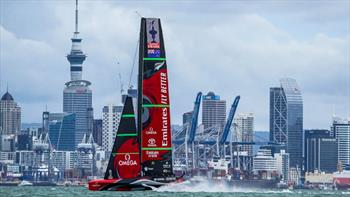 America's Cup: Confidential settlement reached
America's Cup: Confidential settlement reached
(Updated) A confidential settlement reached over five year Cup legal claims.
Confidential settlement reached between the America's Cup team Emirates Team New Zealand and their formerly contracted Event Managers, Mayo & Calder, and others associated with the company. But what of Mainstream Media's role in the affair?
Posted on 29 Jun

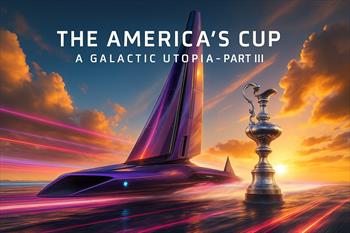 America's Cup - #3 Finish Line
America's Cup - #3 Finish Line
The Cup is still undecided. And somewhere, in one last simulation, the universe holds its breath.
The Cup is still undecided. And somewhere, in one last simulation, the universe holds its breath. Step into the last leg. This is where legends break — or rise.
Posted on 23 Jun

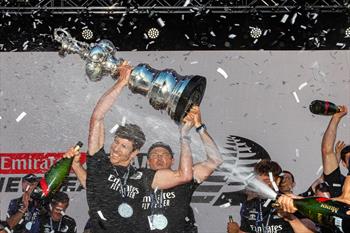 Cup Spy: "Burling Rule" unlikely to be changed
Cup Spy: "Burling Rule" unlikely to be changed
The Defender is unlikely to soften the Rules and allow open season on its sailing team.
Despite the shift of three times America's Cup winner, Peter Burling it is understood that there is unlikely to be any softening of the Nationality rule to enable Burling to get any closer to the action than a chase-boat in the 38th America's Cup.
Posted on 20 Jun

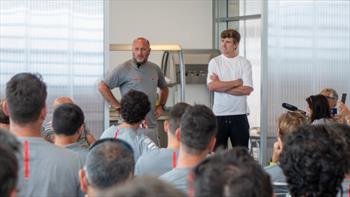 Burling "excited' by Italian move
Burling "excited' by Italian move
In a media statement issued by his Media Team, Burling says he remains fully committed to his role w
In a media statement issued by his Media Team, Burling says he remains fully committed to his role with Black Foils, the New Zealand SailGP Team.
Posted on 20 Jun

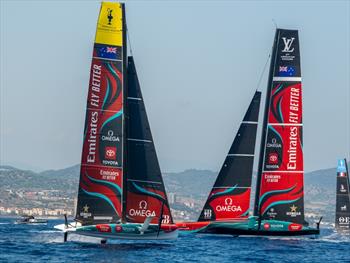 America's Cup: Kiwis advertising for key people
America's Cup: Kiwis advertising for key people
Emirates Team NZ seeking new people for key roles ahead of its 12th America's Cup campaign
Emirates Team New Zealand, the current America's Cup champion is gearing up for the 2027 Defence of the most prestigious trophy in sailing. The team has advertised eight positions in the IT, Meteorology and Engineering areas
Posted on 12 Jun

 America's Cup: Another sponsor signs for Italians
America's Cup: Another sponsor signs for Italians
Luna Rossa has announced that Unipol has renewed its trust in the team
Luna Rossa has announced that Unipol has renewed its trust in the team and will accompany it as an official sponsor for the duration of the 38th America's Cup.
Posted on 5 Jun

 America's Cup fillibustered by Challengers
America's Cup fillibustered by Challengers
A Cup in turmoil - Protocol is unsigned - with entries due to open on Sunday.
Updated story: America's Cup got underway in Rome on Monday, with Round 2 of the official welcoming ceremonies on Wednesday in Naples. However three teams are working in collusion and have again issued statements within minutes of each other.
Posted on 29 May

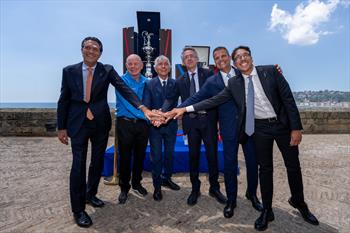 America's Cup enthusiastically received in Naples
America's Cup enthusiastically received in Naples
The Castel dell'Ovo, was the venue for the arrival of the America's Cup in Napes
The Castel dell'Ovo, set on the tuft peninsula of Megaride was the outstanding setting for the Official Host Venue Presentation of the Louis Vuitton 38th America's Cup.
Posted on 28 May

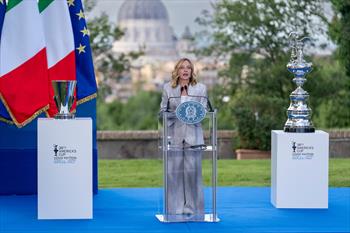 Italian PM welcomes America's Cup in Rome
Italian PM welcomes America's Cup in Rome
Prime Minister Meloni set out a bold vision for the regeneration planned around AC38
The magnificent setting of the Casino del Bel Respiro, commissioned by Pope Innocent X in 1644, in the grounds of Villa Pamphilj, was the outstanding and historic setting for the formal presentation of the Louis Vuitton 38th America's Cup.
Posted on 26 May

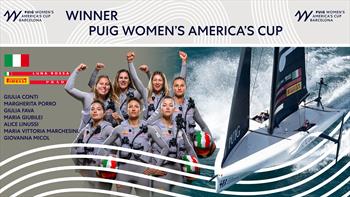 America's Cup: Big changes in crew line-up
America's Cup: Big changes in crew line-up
Women and Youth crews to sail in AC75 in the next Cup - Final Draft of AC38 Protocol
Historic changes are proposed in the Final Draft of the Protocol released by the America's Cup Defender. For the first time a Female and Youth crew members will be part of the six-crew lineup on board the all-electric AC75s.
Posted on 23 May
